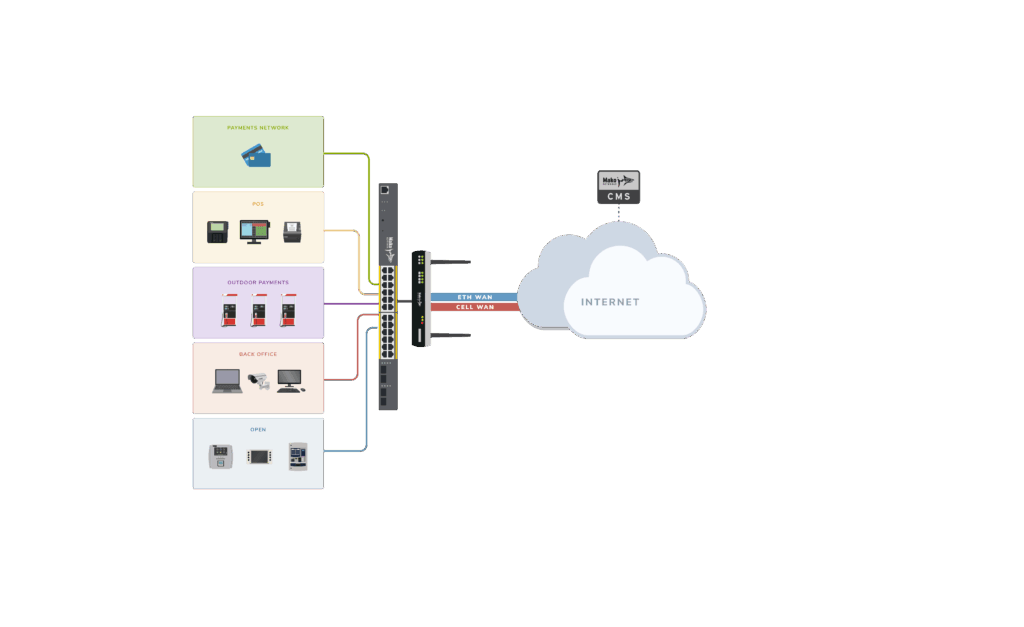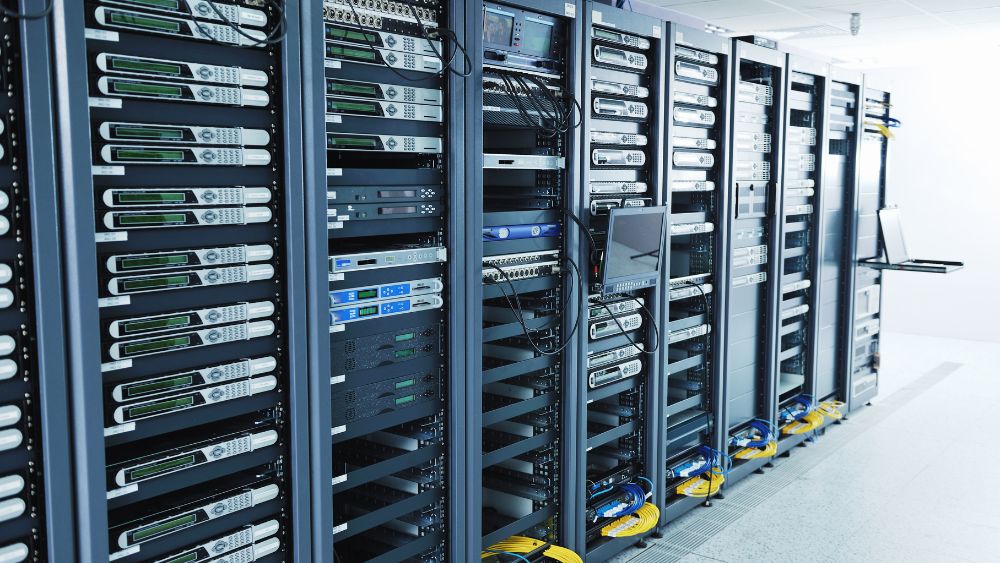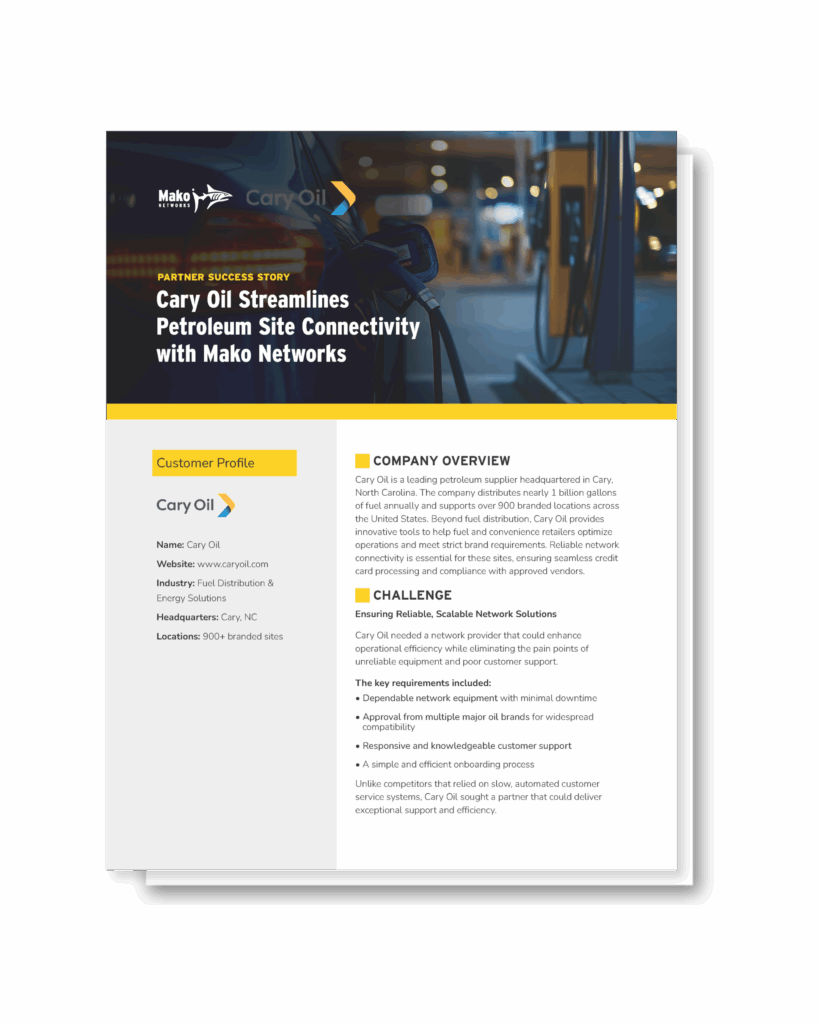In today’s competitive fuel retail landscape, branded wholesalers need secure, reliable, and cost-effective network infrastructure. Yet many unwittingly complicate their network setup, harming performance and security in the process.
The Complexity of Petroleum Retail Networks
Branded retail sites involve many players – fuel brands, POS vendors, retailers, and store operators – each with distinct needs:
- Fuel brands (ExxonMobil, Chevron, BP, etc.) must protect cardholder data and meet PCI DSS standards.
- POS vendors (Verifone, Gilbarco, etc.) need secure remote access for support.
- Branded wholesalers require uptime to keep operations profitable across tech, including CCTV, IoT, Wi-Fi, and tank monitors.
- Store operators depend on dashboards and tools to keep daily operations running smoothly and customers satisfied.
To manage this complexity, fuel brands authorize Managed Network Service Providers (MNSPs), who deploy pre-configured edge devices that meet brand and PCI requirements.
The Catch: Locked-Down Infrastructure
Legacy MNSPs often lock their network gear, preventing branded wholesalers (BWs) from adjusting configurations to meet their own tech needs – needs that, in the era of connected convenience, now go far beyond simple payment processing.
The Workaround That Isn’t Working
To gain needed flexibility to deploy their preferred tech solutions, BWs often install additional network stacks alongside their MNSP networks. While this provides customization, it creates its own set of issues:
- 🔧 More complexity: Managing multiple network systems wastes time and increases risk.
- 🚧 More dependencies: Third-party gear causes finger-pointing between vendors during outages, hurting uptime.
- 🧱 Aging hardware: Retailers are slow to replace legacy equipment, but older firewalls and other edge devices can’t handle today’s bandwidth demands.
A Better Path Forward: Simplifying Petroleum Networks
Today, there are brand-approved solutions designed to unify and simplify operations by providing a purpose-built platform tailored for branded petroleum environments. So, what should businesses prioritize?
First, seek out cutting-edge innovations: look for a single edge device that securely segments network access for all stakeholders, including brands, POS vendors, back-office systems, and operators. When evaluating options, prioritize solutions endorsed by leading fuel brands to ensure maximum confidence and reliability.
 Here are a few additional features to consider:
Here are a few additional features to consider:
- ✅ Fewer Devices: Prioritize solutions that offer one edge device that handles multiple needs with strict access controls.
- 🔁 Always-On Connectivity: Ensure instant, reliable built-in cellular failover for uninterrupted uptime.
- 🔒 Optimized for Redundancy and Simplicity: Seek an advanced patented SD-WAN architecture that removes MNSP data centers, reducing failure points and improving flexibility.
- 📊 Centralized Management: A robust content management system (CMS) offering full network visibility, user roles, and configuration control is crucial.
- 💰 Lower Costs: A unified platform should drive savings through hardware consolidation and improved support.
A modernized network isn’t just nice to have – it’s essential. By cutting through complexity, businesses can boost resilience and unlock smarter growth.
Case Study: Cary Oil
After streamlining with Mako, Cary Oil expanded its deployment to 300+ sites, achieving better performance, security, and scale. Download our latest case study to learn more.


